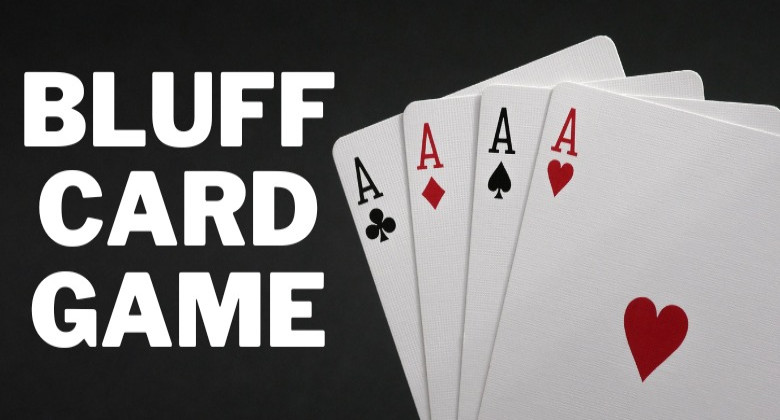
Bluff Card Game - Learn How to Play Bluff Games & Its Rules
What is Bluff Card Game?
Bluff is a fun and exciting card game that revolves around deception and strategic thinking. It is usually played with a standard deck of 52 cards and can be enjoyed by a small or large group of players. This comprehensive guide will delve into the objective, gameplay, and rules and provide tips to increase your chances of winning the Bluff card game.
Bluff Card Game Objective
The objective of Bluff card game is to be the first player to get rid of all your cards. The game revolves around successfully playing cards while bluffing about their actual rank or number. This makes them a lot more interesting and fun to play. The bluff game appears to be a simple-to-learn game as it gives the players a great opportunity to lie and win the game, but it becomes a lot more difficult to lie and win if the right strategy is not applied.
Gameplay: Bluff Card Game
Format of the game: Bluff is typically played with 3 or more players. The game starts with the entire deck of cards being shuffled and dealt evenly among the players. Each player holds their cards facing down and should not reveal their cards to the other players.
Starting the Game: The player with the Ace of Spades (or any predetermined starting card) goes first. They place the card face-down in the center of the playing area and declare its rank (e.g., "Ace of Spades") and number of cards they are placing.
Playing the Cards: The game progresses in a clockwise direction. Each player, in turn, must play one or more cards, which should be of the same rank as the previously played cards. However, players are allowed to bluff and play cards of a different rank than they declare.
Calling Bluff: When a player suspects that another player has played cards that do not match the declared rank, they can challenge the play by calling "Bluff" or "Cheat." The challenged player must then reveal the played cards. If the challenge is valid, and the cards are indeed not of the declared rank, the challenging player wins the round. If the challenge is incorrect, and the cards do match the declared rank, the challenger must pick up the entire pile of played cards.
Continuing the Game: The player who won the challenge starts the next round by playing any card they desire and declaring its rank. The gameplay continues until a player runs out of cards.
Winning the Game: The first player to successfully play all their cards wins the game. In some variations, the player who wins a certain number of rounds (e.g., 5 rounds) is declared the winner.
Bluff Card Game Rules
- Players must play cards of the same rank as the previously played cards while having the option to bluff and play cards of a different rank.
- The challenged player must reveal the playing cards when a challenge is made. If the challenge is correct, the challenger wins the round. If the challenge is incorrect, the challenger picks up the pile of played cards.
- It is not allowed to lie about the rank of cards that are played openly or placed face-up during the game.
Also Read About: - 14 Best Card Games to Play in 2023
Tips to Win at Bluff Card Game
Knowing the goal and when to make the right move is vital when you play a game of bluff or when you play a game of rummy.
Observe and Pay Attention: Watch the behavior and actions of your opponents closely. Look for any signs of hesitation, nervousness, or changes in their playing patterns. This can give you clues about when they might be bluffing.
Timing is Key: Consider the timing of your bluff. Bluffing early in the game may not be as effective, as players are less likely to doubt the initial plays. Save your bluffing for later rounds when players are more cautious.
Keep Track of Played Cards: Try to keep track of the cards that have been played. This can help you identify the likelihood of certain ranks still being in play and make more informed decisions about when to bluff.
Bluff in Moderation: Bluffing can be an effective strategy, but overusing it can diminish its impact. Choose your bluffs wisely and mix them with legitimate plays to keep your opponents guessing.
Observe Patterns and Behavior: Look for patterns in your opponents' plays. Some players may have specific behaviors or gestures when bluffing or playing genuine cards. Recognizing these patterns can give you an advantage.
Play it Safe: When you have cards of the declared rank, play them confidently. This can make your opponents doubt their challenges and increase the chances of them picking up the pile.
Stay Calm and Confident: Project confidence in your plays, whether they are genuine or bluffs. Maintain a calm and composed demeanor to avoid giving away any hints to your opponents.
Remember last played cards: Recall the plays made by each player throughout the game. Use this information to assess their credibility when they play certain ranks or make challenges.
Know Your Opponents: Understand the playing styles and tendencies of your opponents. Some players may be more prone to bluffing, while others may be more cautious. Adjust your strategy accordingly.
Practice and Experiment: Bluffing is an art that improves with practice. Experiment with different bluffing techniques and observe their effectiveness. Learn from your experiences to become a better player.
Following these tips and strategies can enhance your chances of winning at Bluff. Remember, the game is meant to be enjoyed, so have fun and embrace the element of deception and bluffing.

FAQs About Bluff Card Game
How do you play bluff poker cards?
Bluff poker is played similarly to traditional poker, but with the added element of bluffing. Players place bets based on the strength of their hand or by bluffing to deceive opponents into folding. The objective is to have the highest-ranking hand or successfully convince opponents to fold.
Can you play a bluff card game with 2 players?
Bluff card game can be played with 2 players. Each player receives a hand of cards, and they take turns placing bets or calling out bluffs. The game continues until one player runs out of cards or both players agree to end the game.
How many cards are dealt in bluff?
In bluff card game, all 52 cards are dealt to all the players participating in the game. The objective is to get rid of all the cards dealt either by hook or by crook, meaning by bluffing or by playing truthfully.
How do you win the card game bluff?
The objective in bluff is to either have the highest-ranking hand or successfully bluff opponents into folding. To win, players can strategically assess their hand's strength, read opponents' behaviors and betting patterns, and determine the right moments to bluff or call out bluffs. It requires a combination of skill, intuition, and psychological tactics to come out on top.
Related Post
-
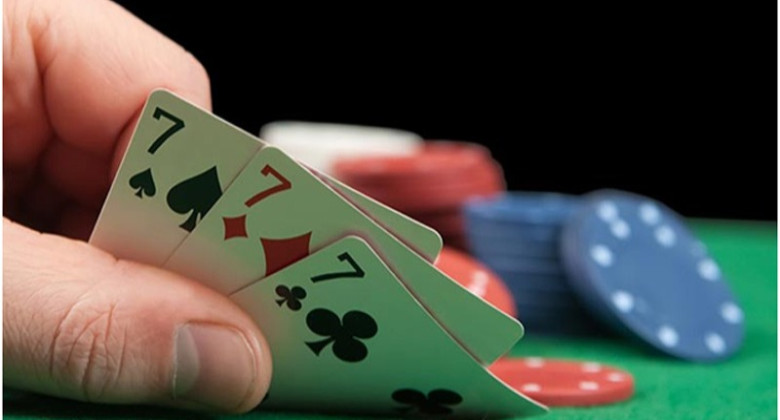 Teen Patti - What is Teen Patti Game & How to Play 3 Patti Online
Teen Patti - What is Teen Patti Game & How to Play 3 Patti Online
-
 How to Download the Junglee Rummy App on Your Mobile Phone
How to Download the Junglee Rummy App on Your Mobile Phone
-
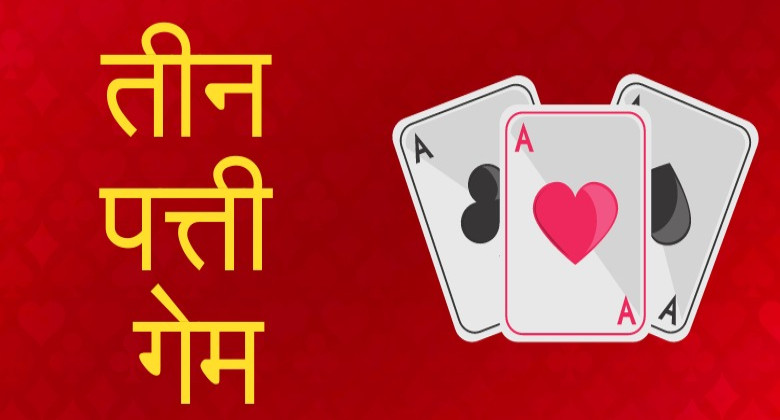 तीन पत्ती (Teen Patti/3Patti) - तीन पत्ती गेम क्या है और कैसे खेलें
तीन पत्ती (Teen Patti/3Patti) - तीन पत्ती गेम क्या है और कैसे खेलें
-
 13 Best Paisa Kamane Wale Games (पैसा कमाने वाले गेम्स) और रियल कैश जीतें
13 Best Paisa Kamane Wale Games (पैसा कमाने वाले गेम्स) और रियल कैश जीतें
-
 Online Game Cash Withdrawal and Instant UPI Cash Withdrawal Games
Online Game Cash Withdrawal and Instant UPI Cash Withdrawal Games



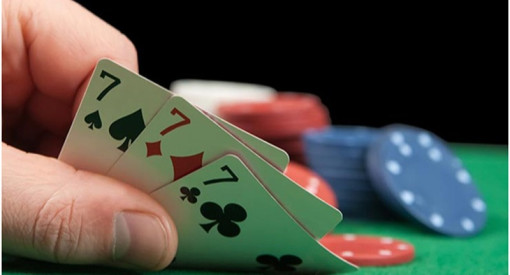



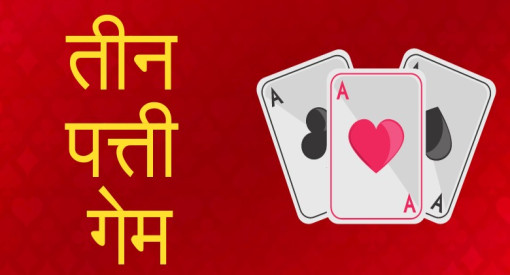


-17213832177155.png?v=1721383218)
